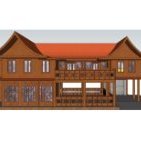Wood Workers
-
Recently Browsing 0 members
- No registered users viewing this page.
-
Topics
-
-
Popular Contributors
-
-
Latest posts...
-
5
Report Legal Action: 23 Indicted for Bangkok Tower Tragedy
There is no indication that whoever is writing this understands that there is complete separation between the corruption at Government level, and curruption at contractor-supplier level which could mix with design and construction issues. The Government level corruption does not come out of the contractor's pocket, as it is added to the estimated construction cost at tender stage, paid to the Government in one sum at the outset, and paid back to the contractor out of Government funds with progress payments. The lower level corruption could directly affect the quality of materials used. -
85
An Operating Manual for Understanding the Thai Mind
Nope! Yeah, Johnny The whole idea of posting such garbage. -
22
Crime Former Boxer Sets Fire to Two Malaysian Tourists Outside Mall
On the Thai news this morning, he got a bit of a kicking before the police arrived -
3
Middle East Israel Masses Troops Near Gaza as Ground Invasion Looms
The final solution. -
12
Non o retirement extention of stay(pattay
I apply for an annual extension in person at CW at a cost of 1900 baht, and 2 hours of my time.- 1
-

-
90
BKK Bank New Acct-Long term expat to provide ID from home countr
If you want to stay with Bangkok Bank try another branch, each one has their own understanding of the so call rules look at it as what Immigration does all the time. This past two months been dealing with BB in Pattaya for a friend it is like pulling teeth even harder, one said need a residential letter, then week later manager acted as if they never heard of one before, but will do it but need to hold money in a time deposit, Then to another the one that actually got busted for illegally opening account for mainland Chinese as tourist why this all started! Again, even with a residential certificate, refuse the rule as changed even when it hasn't this seem to be the common excuse, since my friend has lots of medical issue said go to doctor get a letter we can open one to use for his medical expenses. So after a week, I was told given a small piece of paper go to this particular bank and give this guy the letter along with a 1000 baht, half hour later account opened, with residential letter, and passport,
-
-
Popular in The Pub










Recommended Posts
Create an account or sign in to comment
You need to be a member in order to leave a comment
Create an account
Sign up for a new account in our community. It's easy!
Register a new accountSign in
Already have an account? Sign in here.
Sign In Now